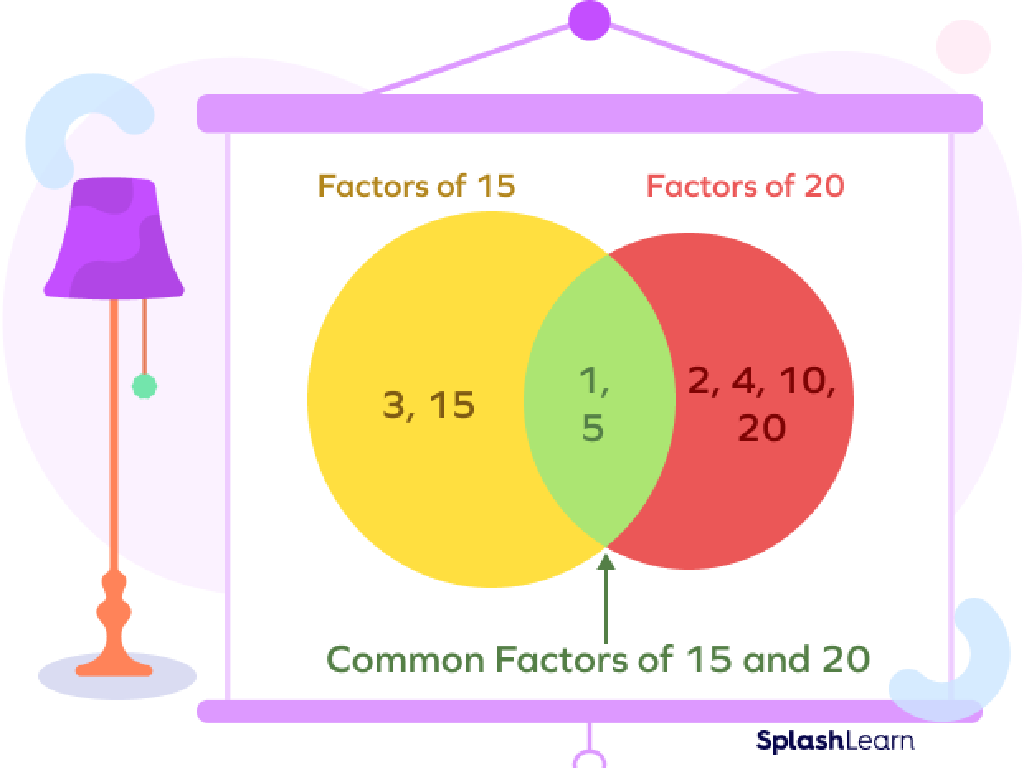Identify And Select Countries Of Asia: Region 3
Subject: Social studies
Grade: Seventh grade
Topic: Asia: Geography
Please LOG IN to download the presentation. Access is available to registered users only.
View More Content
Exploring Asia: Region 3 Geography
– Asia’s vastness and diversity
Asia is the largest continent with diverse cultures and landscapes.
– What are ‘regions’ in geography?
Regions help us study areas with similar physical, political, or cultural traits.
– Zooming into Asia’s Region 3
Region 3 includes countries like China, Japan, and Korea.
– Significance of regional study
Understanding regions helps us appreciate the unique aspects of different areas.
|
This slide introduces students to the geographical complexity of Asia, emphasizing its size and the diversity contained within. By breaking down the continent into regions, we can simplify the study and focus on specific characteristics and countries within those areas. Today’s lesson will concentrate on Region 3, which includes some of the most influential countries in both historical and modern contexts, such as China, Japan, and Korea. Encourage students to think about what makes a region distinct and how geography can influence culture and development. This regional approach will help students to organize information and understand the interconnections within Asia.
Exploring Asia: Focus on Region 3
– Understanding Region 3
– Region 3 includes countries like Vietnam, Laos, and Cambodia.
– Countries within Region 3
– Vietnam, Laos, Cambodia, Thailand, Myanmar, and Malaysia.
– Geographical boundaries
– Bordered by China to the north, India to the west, and the South China Sea to the east.
– Significance of Region 3
– Cultural diversity, rich history, and strategic location for trade.
|
This slide aims to introduce students to Region 3 of Asia, which encompasses the countries of the Indochina peninsula and surrounding areas. Students should learn to identify each country within this region, understand the geographical boundaries that define it, and explore the historical and cultural significance that makes this region unique. Emphasize the diversity found within Region 3, including various languages, religions, and cultural practices, as well as its importance in global economics and politics. Encourage students to research more about the individual countries for a deeper understanding of their unique characteristics.
Exploring Asia: Region 3 Countries
– China: The world’s most populous country
– Known for the Great Wall and its ancient history.
– Japan: Land of the Rising Sun
– Famous for its cherry blossoms and technological advancements.
– Mongolia: The land of the Eternal Blue Sky
– Renowned for its vast steppes and nomadic traditions.
– North Korea: The Hermit Kingdom
– Noted for its closed-off government and Juche ideology.
– South Korea: A tech-savvy nation
– Recognized for its pop culture and strong economy.
– Taiwan: The heart of Asia
– Celebrated for its vibrant democracy and delicious cuisine.
|
This slide introduces students to the countries of Asia’s Region 3, providing a brief overview and a unique fact about each one. China is not only the most populous but also has a rich cultural heritage with the Great Wall symbolizing its historical significance. Japan is well-known for its blend of tradition and technology. Mongolia offers a glimpse into nomadic cultures and wide-open landscapes. North Korea remains isolated, giving it the moniker ‘The Hermit Kingdom.’ South Korea is a hub for technology and pop culture, while Taiwan is known for its democratic values and culinary delights. Encourage students to explore these countries further by researching more about their history, culture, and current events.
Physical Features of Asia: Region 3
– Major mountains and rivers
– Himalayas and Yangtze River shape the region’s geography.
– Climate zones’ impact on life
– Monsoon climates influence agriculture and daily life.
– Unique landscapes in Region 3
– From the Gobi Desert to the lush Mekong Delta.
|
This slide aims to introduce students to the diverse physical geography of Asia’s Region 3, which includes areas such as the Himalayas, significant rivers like the Yangtze, and varied climate zones from monsoons to arid deserts. Emphasize how these features affect the lifestyle of the inhabitants, from the crops they grow to the houses they build. Discuss unique landscapes, such as the Gobi Desert’s vastness and the fertility of the Mekong Delta, and how these contribute to the region’s biodiversity and cultural richness. Encourage students to explore how geography has shaped historical events and cultural development in this part of Asia.
Cultural Highlights of Asia: Region 3
– Diversity in languages
– Region 3 includes languages like Mandarin, Hindi, and Arabic.
– Varied cultural practices
– Traditional dances, clothing, and cuisine differ from country to country.
– Festivals across the region
– Festivals such as Diwali, Chinese New Year, and Eid showcase rich traditions.
– Historical impact on culture
– Historical events have shaped the modern cultural landscape.
|
This slide aims to give students a glimpse into the rich cultural tapestry of Asia’s Region 3. Emphasize the variety of languages spoken across the region, which is a testament to its ethnic diversity. Discuss how cultural practices, which can include anything from daily customs to artistic expressions, vary widely among different countries. Highlight key festivals that are celebrated in the region, explaining their significance and how they reflect the values and history of the people. Lastly, touch upon how historical events, such as empires, colonialism, and trade, have influenced the modern-day culture of these countries. Encourage students to explore these aspects further with examples and to appreciate the diversity that exists within this part of Asia.
Economic Overview of Asia: Region 3
– Agriculture in Region 3
– Predominant in rural areas, includes rice, tea, and spices
– Industry & technology impacts
– Advancements lead to economic growth, e.g., tech hubs
– Trade within Asia & globally
– Export-import dynamics, regional partnerships
– Geography’s role in economy
– Terrain and climate affect production and trade routes
|
This slide provides an overview of the economic landscape in Asia’s Region 3, focusing on agriculture, industry, and technology. Highlight how agriculture remains a backbone in rural areas, with common crops including rice, tea, and spices. Discuss the rise of industry and technology, pointing out examples of tech hubs that contribute to economic growth. Explain the importance of trade relationships both within Asia and on a global scale, emphasizing the role of export-import dynamics and regional partnerships. Lastly, delve into how geography, including terrain and climate, influences economic activities and shapes trade routes. Encourage students to think about how these economic factors interconnect and the importance of geography in shaping economic policies and relationships.
Class Activity: Mapping Asia’s Region 3
– Label Region 3 countries on a map
– Mark major physical features
– Research and note one fact per country
– Look for unique cultural, historical, or geographical details
– Share findings with the class
|
This activity is designed to help students actively engage with the geography of Asia’s Region 3. Provide each student with a blank map and a list of countries that are part of this region. Instruct them to label each country and mark significant physical features like mountains, rivers, and deserts that were discussed in previous lessons. Additionally, students should research and write down an interesting fact about each country, which could pertain to its culture, history, or geography. This will help them to not only memorize the locations but also appreciate the diversity within the region. During the next class, students will present their maps and facts, allowing for a collaborative learning experience. Possible activities include creating a classroom map display, peer quizzes, or a fact-sharing roundtable.
Review: Countries of Asia – Region 3
– Recap of today’s geography lesson
– Open floor for student questions
– Discuss regional Asian connections
– How does Region 3 interact with neighboring areas?
– Reflect on today’s learning
– Think about cultural, economic, and environmental ties
|
This slide aims to consolidate the students’ knowledge from today’s lesson on the countries of Asia, specifically focusing on Region 3. Begin with a brief recap, highlighting the main points covered. Open the floor to questions, allowing students to seek clarification on any aspects they found challenging. Encourage a discussion on how Region 3 is interconnected with the rest of Asia, considering cultural, economic, and environmental aspects. This will help students to understand the broader context of the region within the continent. Conclude the lesson by asking students to reflect on what they’ve learned and how their perception of Asia’s geography may have changed.
Homework: Explore an Asian Country
– Research a Region 3 Asian country
– Focus on geography, culture, economy
– Look into physical landscape, traditions, and financial systems
– Create a short presentation
– Present your findings next class
– Use visuals and facts to support your presentation
|
Students are tasked with selecting a country from Asia’s Region 3, which includes countries such as China, Japan, and South Korea. They must delve into the country’s geography, examining features like mountains, rivers, and climate. Cultural exploration should highlight language, customs, and cuisine. Economic aspects will cover the country’s industries, trade, and currency. Students should prepare a concise presentation, with visual aids, to share their research. This assignment will enhance their research skills and deepen their understanding of Asia’s diverse Region 3. Encourage students to use reliable sources and to practice their presentation skills.






